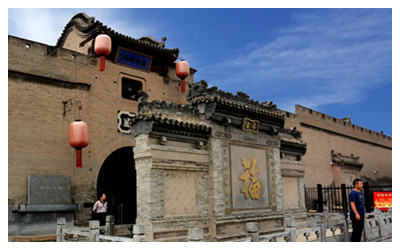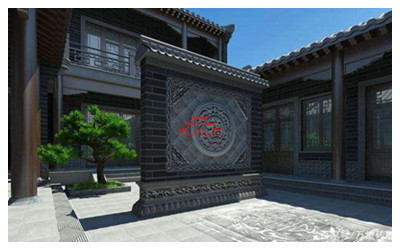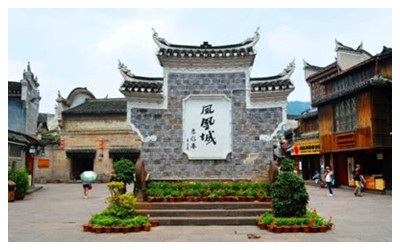Skype: neodalle-travel
Tel: +86 135 7447 2266
E-mail: sales@visitaroundchina.com

 The Screen Wall, called Yingbi or Zhaobi in Chinese, is a the isolated wall either outside or just inside the gate of a traditional Chinese house to shield the rooms from outsiders' view. It can be made of any material-brick, wood, stone or glazed tile.
The Screen Wall, called Yingbi or Zhaobi in Chinese, is a the isolated wall either outside or just inside the gate of a traditional Chinese house to shield the rooms from outsiders' view. It can be made of any material-brick, wood, stone or glazed tile. The most exquisite of all ancient screen walls are three "nine-dragon walls" built of glazed colour tiles. The largest of these, 45.5m X 8m X 2.02m, is now in the city of Datong, Shanxi Province. It originally stood in front of the princely mansion of the thirteenth son of Zhu Yuanzhang, first emperor of the Ming Dynasty. Sculpted on it in seven different colours are nine dragons flying in clouds. The most splendid of the three is the one which belonged to a palace of the Ming Dynasty and now stands north of the lake in Beijing's Beihai Park. It is a mosaic of glazed colour tiles showing on each side nine curly dragons in relief. An observant visitor could also count 635 dragons of smaller sizes on the ridges and roof tiles of the wall. The third of these walls stands opposite the gate Huangjimen in the Forbidden City and is well-known to sightseers. All the three mentioned above were built during the Ming Dynasty (1368-1644) and all used to stand in front of the entrance to a courtyard, making a component part of the architectural complex and adding to the magnificence of the buildings.
The most exquisite of all ancient screen walls are three "nine-dragon walls" built of glazed colour tiles. The largest of these, 45.5m X 8m X 2.02m, is now in the city of Datong, Shanxi Province. It originally stood in front of the princely mansion of the thirteenth son of Zhu Yuanzhang, first emperor of the Ming Dynasty. Sculpted on it in seven different colours are nine dragons flying in clouds. The most splendid of the three is the one which belonged to a palace of the Ming Dynasty and now stands north of the lake in Beijing's Beihai Park. It is a mosaic of glazed colour tiles showing on each side nine curly dragons in relief. An observant visitor could also count 635 dragons of smaller sizes on the ridges and roof tiles of the wall. The third of these walls stands opposite the gate Huangjimen in the Forbidden City and is well-known to sightseers. All the three mentioned above were built during the Ming Dynasty (1368-1644) and all used to stand in front of the entrance to a courtyard, making a component part of the architectural complex and adding to the magnificence of the buildings. Certain screen walls found in the eastern provinces of China bear the image of a strange animal called tan, either carved in brick or painted in colour. According to local belief, this animal was so greedy that it wanted to devour the rising sun on the sea, meeting its own death by drowning. The picture serves as a reminder that greed leads to self-destruction.
Certain screen walls found in the eastern provinces of China bear the image of a strange animal called tan, either carved in brick or painted in colour. According to local belief, this animal was so greedy that it wanted to devour the rising sun on the sea, meeting its own death by drowning. The picture serves as a reminder that greed leads to self-destruction. Ask Questions ?
Ask Questions ?